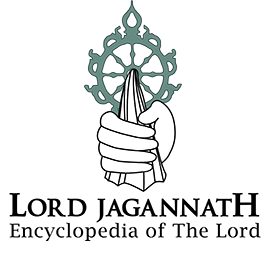Paan, Jagannath & Raghunath
Paan is a preparation in betel leaf (Piper betel), betel nut and other ingredients depending upon individual choice. For some may prefer to have tobacco, some may not, some may like to add peppermint, some don’t, some may demand gulkand and some may prefer no betel nut. The earliest unequivocal evidence of betel chewing dates back to five millennia ago in Philippines, Asia.
Eaten daily by over 600 million people in an area 11,000X6000 square km, the betel leaf is just more than a delicacy. It’s a cultural and religious symbol. It has adopted itself uniquely to various regions and so we have pale Banarasi paan, green Magdi paan, pungent Mysore paan, non pungent Ambadi paan & Hinjili cut paan of Odisha, to just name a few. Bollywood has celebrated paan with such timeless songs like Khaiyke Paan Banaraswalla, Paan khaye Sayan Humaro etc.
In the royal courts of Lucknow nawabs, the whole tradition was refined to Parisian heights of fashion. So we saw magnificent development of ornamented, handcrafted paan boxes (called Paandaans), nut cutters, spittoons etc. Many of these remarkable artifacts are displayed in National Museum.
But as you leaf through Wikipedia searching for the advent of betel chewing in India, an interesting fact emerges. Very interesting and here I quote.
‘In the Indian subcontinent, betel chewing was introduced through early contact of Austronesian traders from Sumatra, Java, and the Malay Peninsula with the Dravidian-speakers of Sri Lanka and southern India at around 3,500 BP. ( Italics mine)
I think the southern India mentioned includes Odisha, then known as Kalinga. I make this guess because Kalinga had very active trade relations with Java & Sumatra since Pre Christian times, so my ancestors could have hardly missed the vibrant betel chewing tradition. Hence, you find a very large number of people in Eastern India take paan daily. And it’s a part of our religious culture.
It’s a favorite of Mahaprabhu, also.
There’s a special class of servitors who are called Bidia Jogania who for generations prepare Paan for Mahaprahu and other hundreds of divinity in the temple. Bidia Jogania means one who arranges a packet of betel. Every day Mahaprabhu eats, like the monarch he is, four times a day- breakfast, lunch, evening snacks and dinner. Seven pieces of Paan are offered after breakfast, lunch and evening snacks to each of the Trinity. After They are anointed with Chandan (sandalwood paste), twenty pieces are offered to each one of them. The Wearing of Night Gown is called Bada Simhara Vesa. At that time eight pieces are offered to each one of them. Finally, as Mahaprabhu retires to bed, there’s again provision of Paan service. The paan Mahaprabhu chews has betel nut, cloves, nutmeg and camphor as ingredients. Fiery, indeed.
Raghunath Das was a paanwari (seller of paan) in 15th c Puri. He had his tiny shop on the Grand Road. Every night, the famous poet of Odia Ramayana, Balaram Das observed that two boys-one black another white-came to the shop, ordered two paans and left without paying anything. He observed that they came just before Pahuda (the closing of temple gates) and one day following them he saw them disappear after the Lion’s Gate. He asked Raghunath why he didn’t charge the boys for the paans they ate every night. Raghunath decided to ask the boys to pay up. When the boys came that night and asked paan, Raghunath asked them to pay up. The boys said that they didn’t have any money and he could keep their stoles instead. The next day when the temple was open, everybody was stunned to discover that the stoles of the deities were missing.
The news reached the King and an enquiry was ordered. Hearing the loss of stoles of Mahaprabhu, Balram Das, a great devotee of the God himself, rushed to the King. He told the King that the stoles were in Ragunath Das shop. The King and his men rushed to Raghunath’s shop. Lo! Behold! The stoles were very much there. Raghunath told everything to the King about how he got the stoles. The King couldn’t believe his eyes. He embraced Raghunath instantly and said, Raghunath, you were very lucky, extraordinarily lucky. What you saw hadn’t been seen by anybody. What had not been done by so many saints, believers to behold him and how utterly they all had failed! And you, Raghunath, how blessed you were to behold Them for so many days and who came down to you from the palace to have your paan.
Jai Jagannath!
